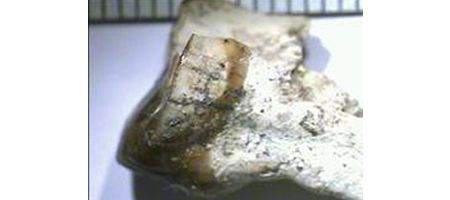Our early ancestors in Central Africa, between three million and 3.5 million years ago, munched mainly on tropical grasses and sedges – a much earlier change in diet than previously believed.

An international research team analysed the carbon isotope ratios in the fossilised teeth of three Australopithecus bahrelghazali individuals excavated at two sites in Chad, and found the signature of a diet rich in foods derived from so-called C4 plants.
“We found evidence suggesting that early hominins, in central Africa at least, ate a diet mainly comprised of tropical grasses and sedges,” says professor Julia Lee-Thorp of the University of Oxford.
“No African great apes, including chimpanzees, eat this type of food despite the fact it grows in abundance in tropical and subtropical regions. The only notable exception is the savannah baboon, which still forages for these types of plants today. We were surprised to discover that early hominins appear to have consumed more than even the baboons.”
The researchers suggest the discovery shows how early humans were able to survive in open landscapes with few trees. The change in dietallowed them to move out of the earliest ancestral forests and exploit new environments.
The Djurab desert, where the fossils were found, is today a dry, hyper-arid environment. When Australopithecus bahrelghazali roamed, though, the area would have had reeds and sedges growing around a network of shallow lakes, with floodplains and wooded grasslands beyond.
It was previously widely believed that early human ancestors acquired tougher tooth enamel, large grinding teeth and powerful muscles so they could eat foods like hard nuts and seeds.
But the new research suggests that the diet of early hominins diverged from that of the great apes at a much earlier stage. The authors believe it’s unlikely that the hominins would have eaten the leaves of the tropical grasses, as they’d have been too abrasive and tough to break down and digest. Instead, they suggest, these early hominins may have relied on the roots, corms and bulbs at the base of the plant.
“Based on our carbon isotope data we can’t exclude the possibility that the hominins’ diets may have included animals that in turn ate the tropical grasses,” says Professor Lee-Thorp.
“But as neither humans nor other primates have diets rich in animal food, and of course the hominins are not equipped as carnivores are with sharp teeth, we can assume that they ate the tropical grasses and the sedges directly.”






